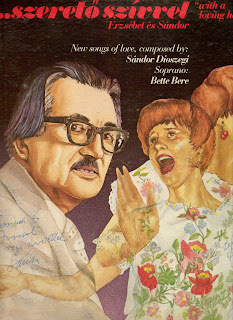 |
| The "JFK" Quintet – New Jazz Frontiers from Washington A Cannonball Adderley Presentation Riverside RLP 396, Made in New York, 1961 |
So why is it, that some jazz musicians are canonized, and others not? What, if any, are the criteria for canonization in jazz music? There's some existential "to be or not to be" questions for you to take into the new year. So what are some of the criteria? Talent, innovation, dedication, success, association, luck? And why do some have it, and others not, asks for a case by case analysis. While the "haves" category musicians can be picked and studied through the annals of jazz music, the "have-nots" you come across by chance. By browsing through piles of thrift store records for example. In the next two weeks I'll take a look at two ensembles that belong to the latter category. Have-nots is probably not the right typification for the musicians that I picked have a lot going for them too. They're the "nearly-haves", or b-list characters of jazz music. The first nearly-haves is a group of college students from Washington, DC who formed in 1961 and called themselves The "JFK" Quintet. They made two albums; the one under the auspices of Cannonball Adderley is from 1961, and then there is the obscure Young Ideas from 62, both on Riverside. They supposedly did a third recording session for Riverside in 1963 but there is no information or details on this session except that drummer Joe Chambers replaced Carl "Mickey" Newman. 1963 is also the year the group parted ways, and Joe Chambers is the one musician from the group who went on into the jazz annals a-list as a sideman for a variety of jazz notorieties. But Chambers wasn't there when the "JFK" quintet actually made a record and tenor-sax man Andy White (usually Andrew White) is the one musician who came out from the original group to have a significant career in jazz. White, who earned a music degree from Howard, became known for his transcriptions of Coltrane solos. As a multi-instrumentalist he also recorded with Weather Report, Stevie Wonder, 5th Dimension as well as a score of his own led combos. Other members of The "JFK" Quintet were also students at Howard; Ray Codrington (trumpet) studied psychology, and pianist Harry Killgo was a mathematics major. Drummer Carl "Mickey" Newman was a X-ray technician, and bass player Walter Booker, Jr. had a B.S. in psychology from Morehouse College. Booker ended up in Cannonball Adderley's band, Newman didn't record beyond "JFK". Codrington had a long career in music and is still active on trumpet in The John Brown Quintet, while for Harry Killgo I couldn't find any references besides The "JFK" Quintet on line save for an obituary from 2010 that didn't mention music at all. The tune Cici's Delight to which you can listen to below is opening track of side b on the record New Jazz Frontier from Washington. Andrew White who wrote the tune that sounds vaguely familiar was 19 years old then. The otherwise immaculate record skips at the very end, and I think it's a lovely addition to the tune.


































